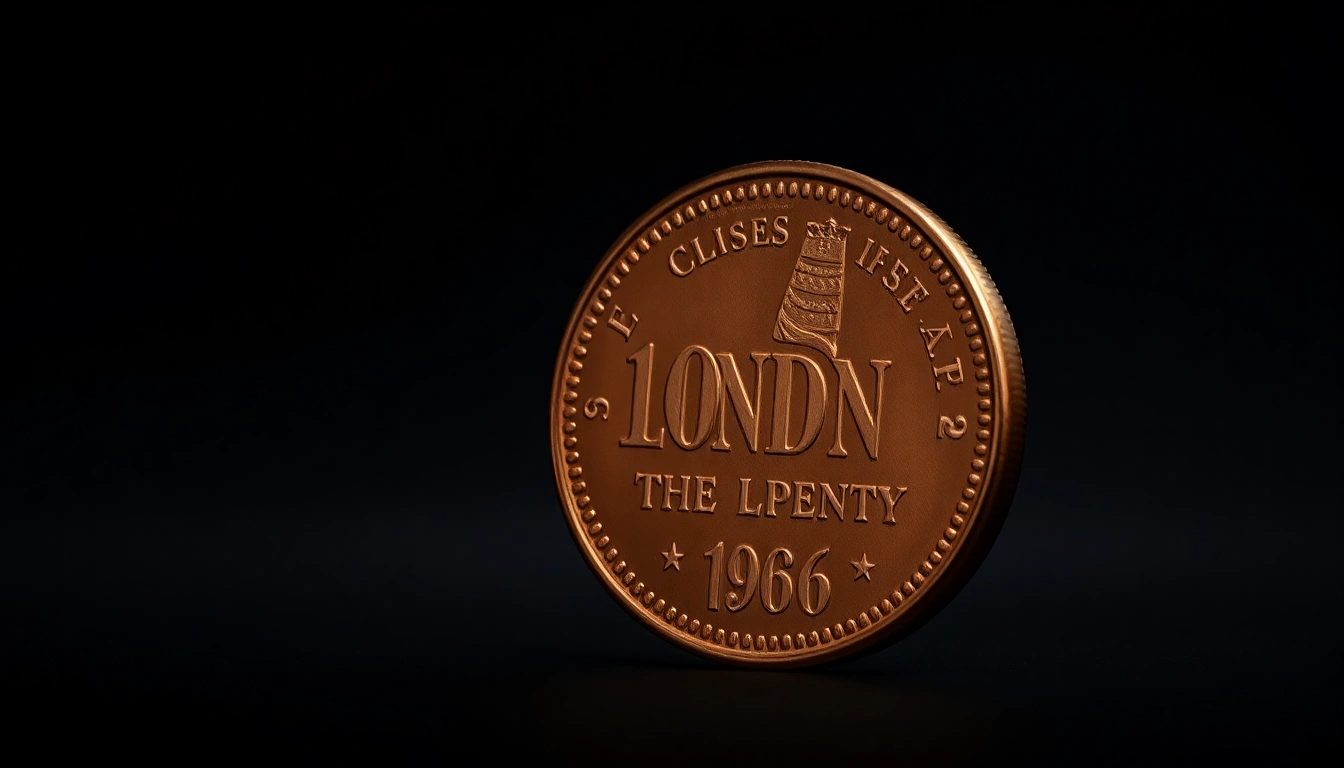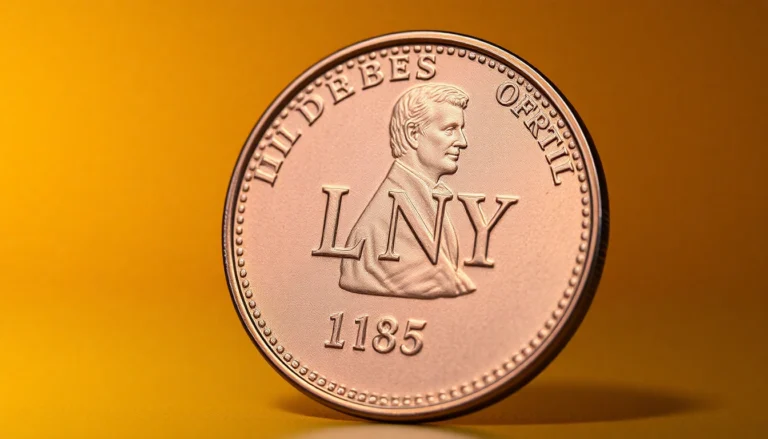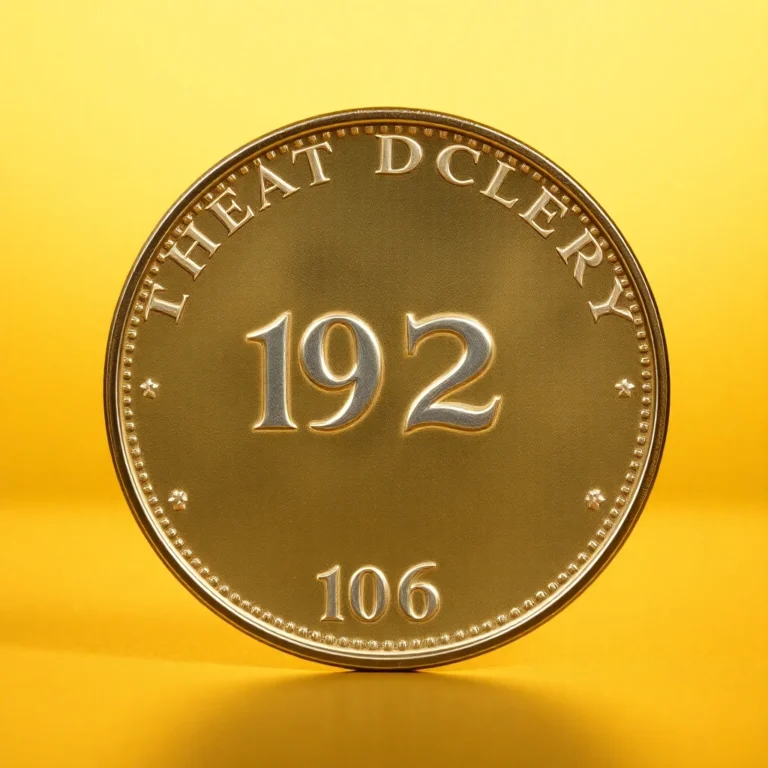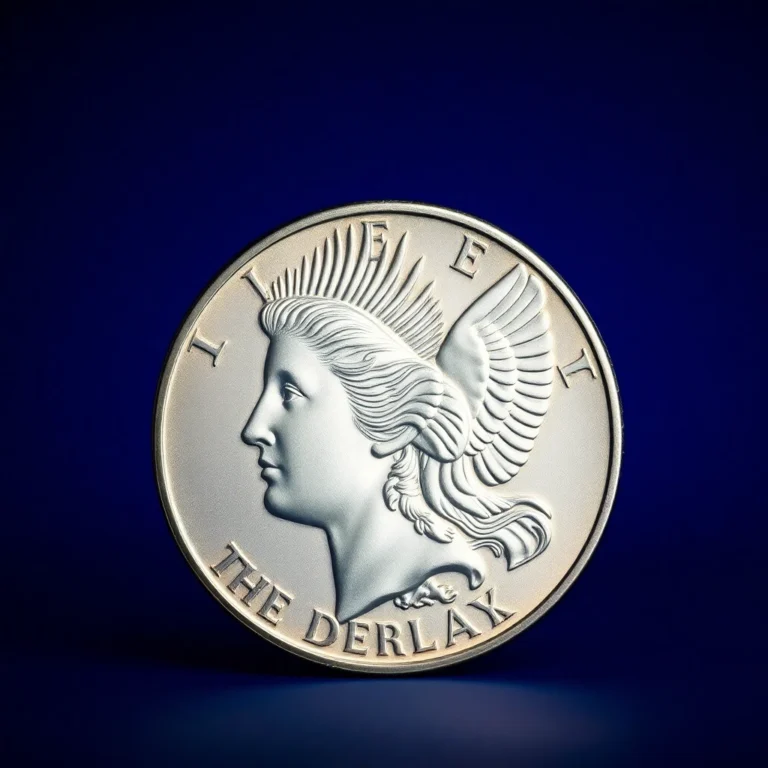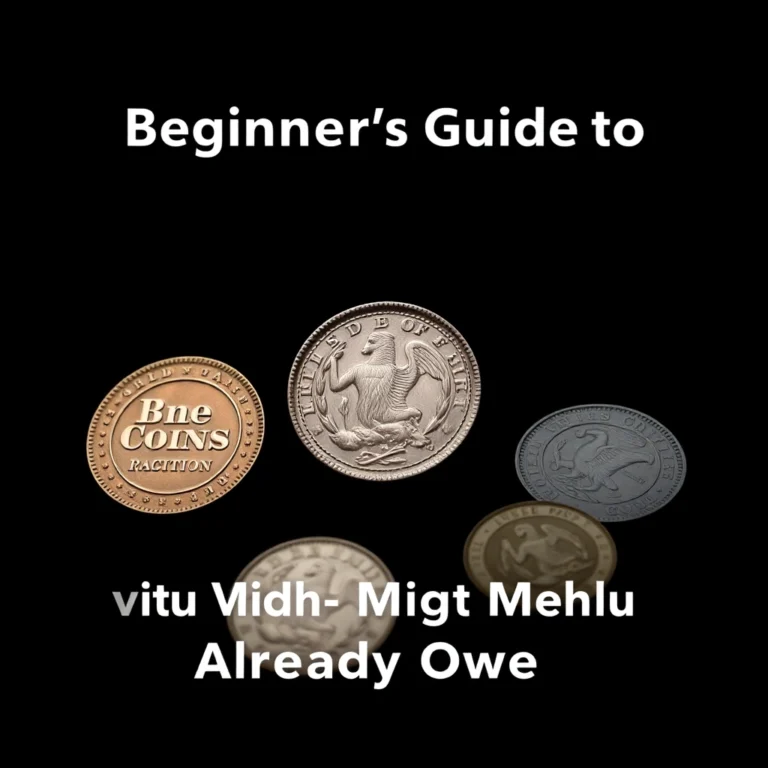Imagine sifting through a handful of pennies, only to discover that one of these humble coins holds the key to a small fortune. For coin enthusiasts, the Lincoln penny is more than mere pocket change; it’s a canvas of history, artistry, and occasionally, profitable errors. These errors, often unnoticed by the untrained eye, can transform a simple coin into a collector’s prized possession, worth thousands more than its face value.
In this article, we’ll uncover 10 common Lincoln penny errors that could be lurking right under your nose, waiting to be found. From doubled dies to misaligned strikes, each error tells a unique story of minting mishaps and rare occurrences. Whether you’re a seasoned numismatist or a curious beginner, understanding these errors can elevate your collecting game and potentially boost your collection’s value significantly.
Prepare to dive into a world where a mere penny can defy its ordinary status and become a star in your collection, as we guide you through these 10 intriguing errors that could turn your pocket change into a jackpot.
1. 1955 Doubled Die Obverse Penny
The 1955 Doubled Die Obverse Penny is a legendary find in the world of numismatics, attracting collectors with its dramatic error and storied history. This penny emerged from the Philadelphia Mint during a period when quality control was less stringent, leading to the creation of the now-famous doubled die variety. The doubling is most noticeable on the obverse, where the date and the word “LIBERTY” exhibit a strikingly doubled appearance, making it one of the most sought-after errors in the Lincoln series. 🪙
Key identifying features of the 1955 Doubled Die Obverse Penny include the prominent doubling of the date and lettering, which is easily visible to the naked eye. There are no major varieties of this error, as the primary focus is on the clear doubling effect. Due to its rarity and demand among collectors, the value of this coin can reach impressive heights, especially in higher grades.
| Grade | Value Range |
|---|---|
| Good (G-4) | $900-$1,200 |
| Very Good (VG-8) | $1,200-$1,500 |
| Fine (F-12) | $1,500-$2,000 |
| Very Fine (VF-20) | $2,000-$3,500 |
| Extremely Fine (EF-40) | $3,500-$5,000 |
| About Uncirculated (AU-50) | $5,000-$8,000 |
| Mint State (MS-60) | $8,000-$12,000 |
| Gem Mint State (MS-65) | $12,000-$25,000 |
2. 1983 Doubled Die Reverse Penny
The 1983 Doubled Die Reverse Penny is a fascinating error coin that has captured the interest of collectors and numismatists alike. This intriguing Lincoln penny error emerged as a result of a misalignment during the minting process, where the reverse die was doubled. This doubling predominantly affects the inscriptions “ONE CENT” and “E PLURIBUS UNUM,” making them appear slightly doubled and giving the coin its unique character. 🪙
Identifying a genuine 1983 Doubled Die Reverse involves examining these areas closely, often with magnification, to detect the doubling. This error is distinct and should not be confused with minor mechanical doubling that affects many coins of the same year.
| Grade | Value Range |
|---|---|
| Good (G-4) | $15-$25 |
| Very Good (VG-8) | $20-$35 |
| Fine (F-12) | $30-$50 |
| Very Fine (VF-20) | $50-$75 |
| Extremely Fine (EF-40) | $75-$125 |
| About Uncirculated (AU-50) | $100-$150 |
| Mint State (MS-60) | $200-$300 |
| Gem Mint State (MS-65) | $500-$1,000 |
3. 1943 Copper Penny Error
The 1943 Copper Penny is one of the most famous error coins in American numismatic history. During World War II, the U.S. Mint switched from copper to zinc-coated steel for Lincoln cents to conserve copper for wartime needs. However, a small number of copper planchets from 1942 were mistakenly struck in 1943, creating this rare and highly sought-after error. These pennies are incredibly valuable due to their scarcity and historical significance. 🪙
Key identifying features of the 1943 Copper Penny include a distinct copper color rather than the usual grayish steel appearance. The coin should also have a strong strike with clear details, as genuine examples were minted on regular copper planchets of the era. Be wary of counterfeits, often made by copper-plating steel pennies or altering the dates on genuine 1948 pennies.
| Grade | Value Range |
|---|---|
| Good (G-4) | $60,000-$80,000 |
| Very Good (VG-8) | $80,000-$100,000 |
| Fine (F-12) | $100,000-$120,000 |
| Very Fine (VF-20) | $120,000-$160,000 |
| Extremely Fine (EF-40) | $160,000-$200,000 |
| About Uncirculated (AU-50) | $200,000-$300,000 |
| Mint State (MS-60) | $300,000-$500,000 |
| Gem Mint State (MS-65) | $500,000-$1,000,000+ |
4. 1972 Doubled Die Obverse Penny
The 1972 Doubled Die Obverse Lincoln penny is a fascinating find for collectors, combining historical intrigue with numismatic allure. Born from a minting mishap during a period of changing economic landscapes, this penny showcases distinct doubling on the obverse, predominantly visible on the inscriptions “LIBERTY” and “IN GOD WE TRUST”. This error arose from a doubled die, where the die itself was mistakenly impressed twice at slightly different angles, leading to the doubled image.
Among the known varieties, the 1972 Doubled Die Obverse (DDO) is the most prominent, though several lesser varieties exist, each with varying degrees of doubling. The rarity and demand for these errors have rendered them highly sought after by collectors, with pristine examples commanding a premium in the market.
| Grade | Value Range |
|---|---|
| Good (G-4) | $50-$75 |
| Very Good (VG-8) | $75-$125 |
| Fine (F-12) | $125-$200 |
| Very Fine (VF-20) | $200-$300 |
| Extremely Fine (EF-40) | $300-$450 |
| About Uncirculated (AU-50) | $450-$600 |
| Mint State (MS-60) | $600-$1,000 |
| Gem Mint State (MS-65) | $1,000-$3,000 |
5. 1969-S Doubled Die Obverse Penny
The 1969-S Doubled Die Obverse Penny is among the most coveted mint errors in the numismatic world, capturing the imagination of collectors with its strikingly doubled features. 🪙 This rare penny was produced at the San Francisco Mint during a time when quality control was less stringent, leading to several prominent error coins. The 1969-S doubled die is particularly celebrated for the dramatic doubling visible on the obverse, especially in the inscriptions “LIBERTY” and “IN GOD WE TRUST,” as well as the date. This doubling gives the coin its distinctive and valuable appearance.
Identifying a genuine 1969-S Doubled Die Penny requires careful examination, as the doubling is bold and unmistakable. Be wary of counterfeits, as their presence in the market is significant due to the penny’s high value. Authentic varieties of this error are scarce, with only a few dozen known to exist.
| Grade | Value Range |
|---|---|
| Good (G-4) | $10,000-$15,000 |
| Very Good (VG-8) | $15,000-$20,000 |
| Fine (F-12) | $20,000-$25,000 |
| Very Fine (VF-20) | $25,000-$30,000 |
| Extremely Fine (EF-40) | $30,000-$50,000 |
| About Uncirculated (AU-50) | $50,000-$70,000 |
| Mint State (MS-60) | $70,000-$90,000 |
| Gem Mint State (MS-65) | $100,000-$125,000 |
6. 1992 Close AM Penny
The 1992 Close AM Lincoln penny is a fascinating error coin that captivates collectors with its rarity and historical intrigue. This error occurred during the transition period when the United States Mint altered the reverse design of the penny. In 1993, the Mint officially adopted a new reverse design, but a small number of 1992 pennies were mistakenly struck with this new reverse, featuring the letters “A” and “M” in “AMERICA” almost touching. This subtle yet critical difference distinguishes the Close AM from its common Wide AM counterpart. 🪙
Identifying a 1992 Close AM penny requires careful inspection of the reverse side, where the letters “A” and “M” in “AMERICA” should appear very close to each other. This error is known in both the Philadelphia and Denver mints, though the Denver mint is notably rarer. Collectors treasure these coins not only for their rarity but also for the intriguing story they tell about the minting process.
| Grade | Value Range |
|---|---|
| Good (G-4) | $500-$700 |
| Very Good (VG-8) | $700-$900 |
| Fine (F-12) | $900-$1,100 |
| Very Fine (VF-20) | $1,100-$1,500 |
| Extremely Fine (EF-40) | $1,500-$2,000 |
| About Uncirculated (AU-50) | $2,000-$3,000 |
| Mint State (MS-60) | $3,000-$4,500 |
| Gem Mint State (MS-65) | $4,500-$7,000 |
7. 1999 Wide AM Penny
The 1999 Wide AM Penny is a notable coin error that captures the attention of collectors due to its rarity and potential value. As part of the Lincoln Memorial series, this penny was mistakenly minted with a design intended for proofs, leading to the distinctive “Wide AM” variety. Unlike the standard issue of the same year, where the letters “A” and “M” in “AMERICA” on the reverse are almost touching, the Wide AM version features a noticeable gap between these letters.
This error occurred during a transitional period in U.S. Mint operations, which makes it a fascinating find for numismatists. The 1999 Wide AM Penny is one of three similar errors from the late 1990s, with its counterparts being the 1998 and 2000 Wide AM Pennies. Collectors seek these coins not only for their rarity but also for the story they tell about minting processes and oversight.
| Grade | Value Range |
|---|---|
| Good (G-4) | $5-$10 |
| Very Good (VG-8) | $10-$15 |
| Fine (F-12) | $15-$25 |
| Very Fine (VF-20) | $25-$50 |
| Extremely Fine (EF-40) | $50-$100 |
| About Uncirculated (AU-50) | $100-$300 |
| Mint State (MS-60) | $300-$600 |
| Gem Mint State (MS-65) | $600-$1,200 |
8. 1944 Steel Penny Error
The 1944 Steel Penny Error is a fascinating anomaly in the world of coin collecting, harking back to a tumultuous time in U.S. history. During World War II, the U.S. Mint switched from copper to steel for the 1943 pennies to conserve copper for the war effort. However, some 1944 pennies were mistakenly struck on leftover steel planchets, creating a rare and highly sought-after error coin. 🪙
Key identifying features of the 1944 Steel Penny include a silvery appearance due to its zinc-coated steel composition, which is a stark contrast to the typical copper pennies of that year. Collectors should be wary of counterfeits, as some are simply 1944 copper pennies that have been plated to mimic the steel version.
| Grade | Value Range |
|---|---|
| Good (G-4) | $75,000-$100,000 |
| Very Good (VG-8) | $100,000-$125,000 |
| Fine (F-12) | $125,000-$150,000 |
| Very Fine (VF-20) | $150,000-$175,000 |
| Extremely Fine (EF-40) | $175,000-$200,000 |
| About Uncirculated (AU-50) | $200,000-$250,000 |
| Mint State (MS-60) | $250,000-$300,000 |
| Gem Mint State (MS-65) | $300,000-$400,000 |
9. 1984 Doubled Ear Penny
The 1984 Doubled Ear Penny is a fascinating error coin that captures the interest of collectors worldwide. This intriguing error occurred during a transitional period when the U.S. Mint was refining its processes, leading to this unique doubling effect. The penny is part of the Lincoln Memorial series, which has been a staple of American numismatics since 1959. 🪙
The hallmark of the 1984 Doubled Ear Penny is the noticeable doubling on Abraham Lincoln’s earlobe. This is a result of a die error where the design was impressed twice, creating a distinct, doubled appearance. This type of error is known as “doubled die” and is considered one of the more dramatic examples from the series. The 1984 Doubled Ear Penny does not have known varieties, but its scarcity and unique feature make it highly desirable among collectors.
| Grade | Value Range |
|---|---|
| Good (G-4) | $5-$10 |
| Very Good (VG-8) | $10-$20 |
| Fine (F-12) | $20-$35 |
| Very Fine (VF-20) | $35-$60 |
| Extremely Fine (EF-40) | $60-$100 |
| About Uncirculated (AU-50) | $100-$200 |
| Mint State (MS-60) | $200-$400 |
| Gem Mint State (MS-65) | $400-$1,000 |
10. 1995 Doubled Die Obverse Penny
The 1995 Doubled Die Obverse Penny is a fascinating find for coin collectors, offering both historical intrigue and potential financial gain. This error coin emerged from the Philadelphia Mint during a year when the U.S. Mint was transitioning to more modern minting technologies. The most striking feature of this coin is the noticeable doubling on the obverse, particularly visible in the inscriptions “LIBERTY” and “IN GOD WE TRUST”. This doubling gives the coin its name and is the primary feature collectors seek.
While the 1995 Doubled Die Obverse is the most renowned variety from that year, it’s crucial to note that not all 1995 pennies exhibit this error. Detecting the doubled die requires careful examination, often with magnification, as the anomaly can be subtle yet distinctive once identified. Collectors prize these coins, especially in higher grades, as their rarity and demand increase their value significantly.
| Grade | Value Range |
|---|---|
| Good (G-4) | $10-$15 |
| Very Good (VG-8) | $15-$25 |
| Fine (F-12) | $25-$40 |
| Very Fine (VF-20) | $40-$60 |
| Extremely Fine (EF-40) | $60-$100 |
| About Uncirculated (AU-50) | $100-$150 |
| Mint State (MS-60) | $150-$250 |
| Gem Mint State (MS-65) | $300-$450 |
As we explored the 10 common Lincoln penny errors—from the elusive 1955 Doubled Die Obverse to the striking 1999 Wide AM—each coin holds the potential to be a treasure trove of history and value. These errors, often overlooked by the untrained eye, can transform a simple penny into a collector’s prize worth thousands. For the savvy numismatist, my expert tip is to invest in a quality magnifying glass; it’s an indispensable tool for detecting subtle anomalies that can signal a rare find. Market trends indicate a steady rise in demand for error coins, driven by both seasoned collectors and new enthusiasts eager to uncover hidden gems. Remember, each coin tells a story of its own—and by collecting, you become a part of its journey. Embrace the thrill of discovery, for with every penny lies the possibility of unearthing a piece of history and a testament to the rich tapestry of American minting.
FAQs
How can I determine the value and grade of my Lincoln penny error?
The value of a Lincoln penny error depends on factors like rarity, demand, and condition. To determine its grade, consider consulting a professional grading service like PCGS or NGC. They can provide an official grade, which significantly influences value. Additionally, researching recent auction results for similar errors can offer insight into current market values.
What are some authentication tips for Lincoln penny errors?
To authenticate Lincoln penny errors, examine the coin under magnification for die characteristics typical of genuine errors. Look for wear patterns consistent with its age and compare it to verified examples online or in numismatic literature. When in doubt, seek verification from a reputable coin dealer or third-party grading service.
What is some advice for collectors interested in Lincoln penny errors?
Start by familiarizing yourself with the most common errors, such as double dies, off-center strikes, and clipped planchets. Join numismatic forums and attend coin shows to learn from experienced collectors. Building a reference library of error coin guides can also be invaluable for identifying potential finds.
What is the historical significance of Lincoln penny errors?
Lincoln penny errors provide a fascinating glimpse into the minting process and historical mint practices. Each error tells a story of production quirks and technological limitations of its time. Collecting these errors offers a unique perspective on the evolution of U.S. coinage and the challenges faced by the U.S. Mint.
What are some common varieties of Lincoln penny errors to look out for?
Some common Lincoln penny errors include the 1955 and 1972 double die obverses, the 1983 copper planchet error, and off-center strikes. Be on the lookout for planchet errors like clipped or cracked planchets, and mint mark errors such as repunched mint marks. These varieties often intrigue collectors and can significantly enhance a collection’s value.
